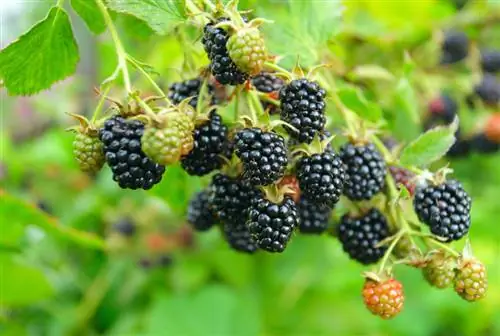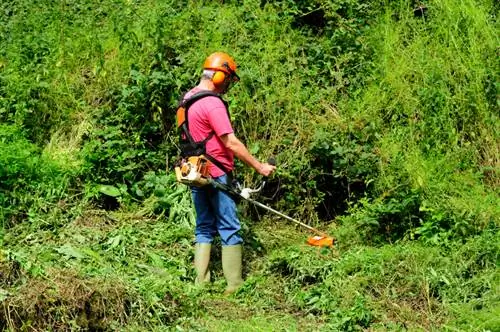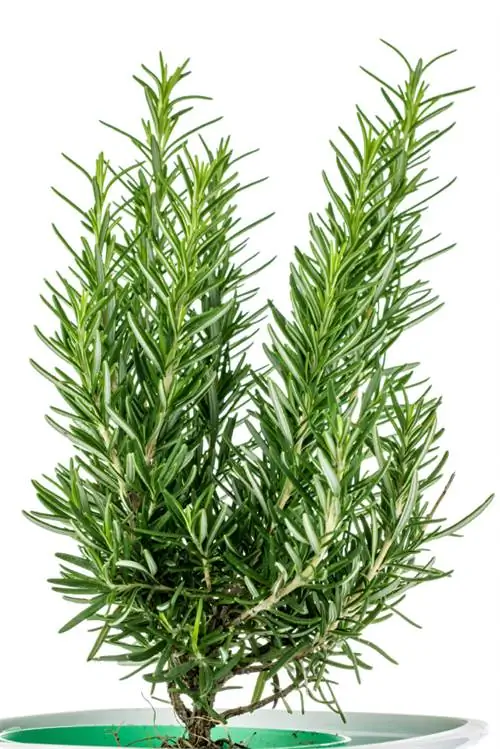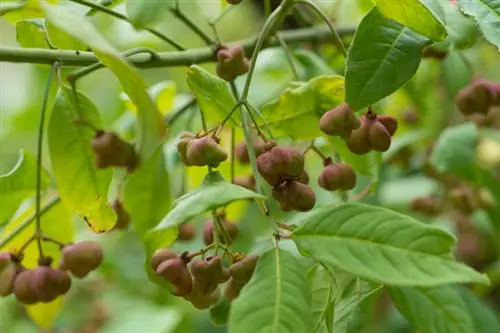- Author admin [email protected].
- Public 2023-12-16 16:46.
- Last modified 2025-01-23 11:19.
The blackberry plant, with its canes that sprout every year, is generally quite a survivor. When transplanting, however, a few things should be taken into account to enable the plant to grow smoothly.
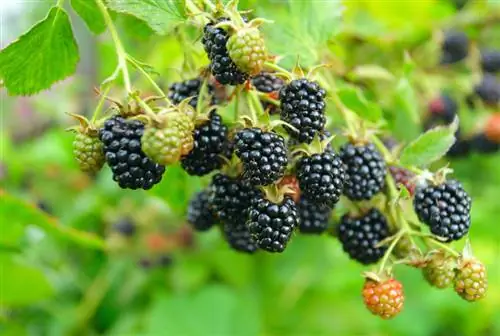
How to transplant blackberries successfully?
Blackberries are best transplanted in spring by placing them in a sunny, wind-protected location, leaving the roots intact when digging, and using a prepared planting hole with natural fertilizer. Propagation via cuttings is also possible.
Finding a good location for the blackberry
Blackberries are loyal suppliers of delicious berries in the home garden, which gradually ripen throughout the summer and can be harvested fresh for months. With just a little care in the form of regular fertilization and annual pruning, blackberry plants are constantly rejuvenating themselves and can provide decades of enjoyment. That's why it's a shame when old blackberry plants in the garden have to be removed when building greenhouses or other projects. If you are looking for a new location for a blackberry plant, you should choose a place that is as sunny and sheltered from the wind as possible. Sometimes it is also a good idea to place blackberry plants on a trellis in front of a sunny house wall in order to move the ripening period forward a little.
Transplanting in spring is ideal
The best chance for the survival of the blackberry plant is to move it in spring. As soon as the top layer of soil is no longer frozen, blackberries can be transplanted until around April. If there are annual canes on the plant to be moved, it may be possible to harvest fruit from the plant in the same year. As with all plants, prolonged dry periods for transplanting should be avoided. However, there is no excessive heat in early spring, so watering the plant after moving it is usually sufficient for irrigation.
Prepare the planting hole correctly
The period between digging up and putting it back into the ground should be as short as possible to protect the blackberry roots from drying out. The roots should remain as completely attached to the plant as possible when digging out, otherwise the canes will have to be cut back more to compensate. For planting, a hole of at least 50x50x50 centimeters should be dug. In order to optimally apply fertilizer for the first year, the following natural fertilizers can be mixed with the plant substrate:
- Horse manure
- Chicken manure
- Cow dung in dried pellet form
- mulched lawn clippings
Tips & Tricks
If an old blackberry bush cannot be dug up due to its branched roots, propagation via cuttings is also an option. These are ideally cut from annual canes and usually take root within a few weeks.

